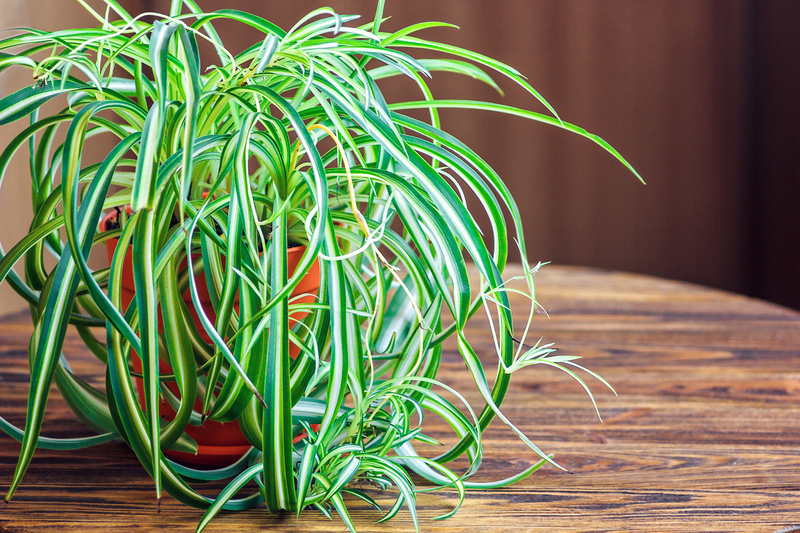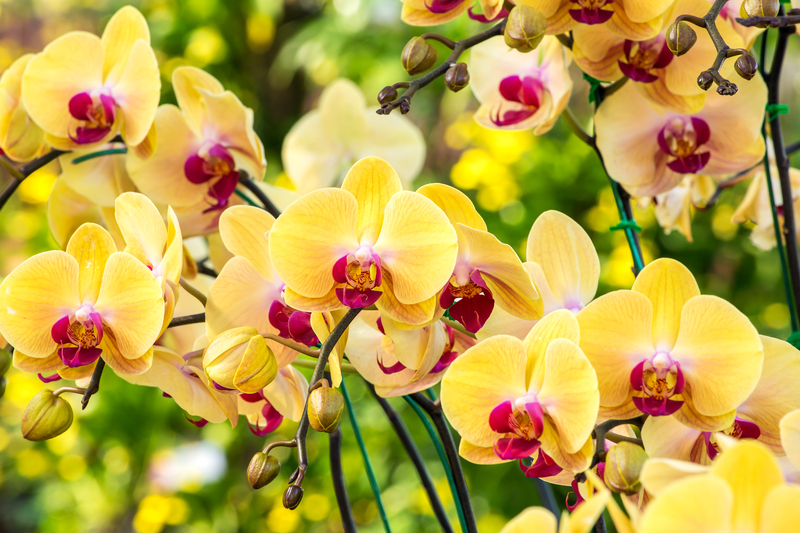The Art and Science of Container Gardening
Posted on 09/06/2025
The Art and Science of Container Gardening: Transform Your Space with Potted Wonders
Container gardening is an innovative and accessible way to bring nature right to your doorstep, no matter the size of your living space. Whether you live in an apartment with a small balcony or have a sprawling backyard, the concept of growing plants in pots, troughs, and nontraditional vessels unlocks a world of horticultural possibilities. In this comprehensive guide, we will delve into both the artistic flair and the scientific principles behind successful container gardening. Learn how to select the right containers, mix the perfect soil, choose suitable plants, and style your container garden to create your own lush oasis.
Why Choose Container Gardening?
Container gardening offers a range of benefits that make it an increasingly popular choice for plant enthusiasts and beginners alike. Here's why more people are embracing this gardening method:
- Space efficiency: Ideal for balconies, patios, rooftops, and urban dwellers.
- Design flexibility: Move, rearrange, and redesign with ease.
- Pest control: Isolate problems and minimize widespread infestations.
- Soil quality management: Control nutrients and texture for optimum plant health.
- Less backbreaking labor: Enjoy gardening without extensive digging or bending.
- Season extension: Bring pots indoors to protect from harsh weather or extend the growing season.

The Science Behind Successful Container Gardening
1. Understanding Plant Needs: Light, Water, and Nutrition
At its core, container gardening science revolves around meeting the essential needs of your plants--just as in traditional gardening, but with some unique considerations.
- Light: Observe how much sunlight your space receives daily. Full-sun plants, like tomatoes, need at least 6-8 hours of light, while shade-lovers, like ferns, thrive with indirect light.
- Water: Containers tend to dry out quickly. Regular monitoring and consistent watering are crucial, especially during hot weather.
- Nutrition: Potting mixes supply only limited nutrients. Frequent feeding with balanced fertilizers is essential for healthy growth.
2. Selecting the Right Container
The type of container you choose affects everything from root health to moisture retention and the overall aesthetic of your garden.
- Material: Terra cotta, ceramic, plastic, wood, and metal pots each have their pros and cons. Terra cotta is porous and ideal for drought-tolerant plants, while plastic retains moisture longer.
- Size: A larger pot provides more room for roots and helps prevent rapid drying. Avoid pots that are too small, as they can stunt growth.
- Drainage: Ensure that all containers have drainage holes to prevent waterlogging, a common cause of root rot.
- Shape: Tall pots suit deep-rooted plants; shallow dishes are perfect for succulents and ground covers.
3. The Perfect Potting Mix
Using garden soil in containers is not recommended. Instead, use a high-quality potting mix that's light, well-aerated, and holds moisture while ensuring proper drainage.
- Look for mixes containing peat moss, coconut coir, vermiculite, and perlite.
- Add compost or organic matter for nutrients and microbial health.
- Consider specialty mixes for succulents, orchids, or acid-loving plants.
The Artistry of Container Gardening: Design & Creativity
1. Container Garden Design Principles
Like any art form, container gardening lets you express your creativity through colors, shapes, and structure.
- Color: Combine plants with contrasting or complementary foliage and flowers.
- Texture: Mix fine, spiky, rounded, or trailing textures for visual interest.
- Balance: Use the "thriller, filler, spiller" technique for impactful design:
- Thriller: A tall, bold centerpiece plant (e.g. canna lily).
- Filler: Bushy, mid-sized plants that add volume (e.g. geraniums).
- Spiller: Cascade over the edge of the pot (e.g. sweet potato vine).
- Symmetry vs. Asymmetry: Try symmetrical designs for formal spaces, or go playful with asymmetry and multiple pots at varying heights.
2. Choosing the Right Plants for Your Container Garden
Careful plant selection is essential for container garden success. Consider the following when choosing species and varieties:
- Growth habits: Pair plants with similar light and water requirements.
- Mature size: Avoid overcrowding by accounting for how large each plant will grow.
- Seasonal interest: Combine evergreens, annuals, and perennials for year-round appeal.
- Edibles or ornamentals: Grow herbs, vegetables, decorative flowers, or even dwarf fruit trees.
3. Color and Texture Combinations
Container gardening artistry thrives on creative combinations. Some classic and innovative ideas:
- Monochrome White: White impatiens, dusty miller, and white begonias for a soft look.
- Tropical Flair: Brightly colored coleus, cannas, and sweet potato vines together.
- Edible Arrangement: Kale, nasturtium, and parsley combine beauty and function.
- Succulent Showcase: Echeveria, sedum, and crassula in a shallow dish.
4. Vertical and Hanging Container Gardens
Limited on floor space? Go vertical or use hanging baskets:
- Stack pots, use wall-mounted planters, or install a trellis for climbing plants like morning glories or peas.
- Hanging baskets are ideal for trailing plants and flowers such as petunias, ivy, or strawberries.
Best Practices for Thriving Container Gardens
1. Watering Techniques
Because containers dry faster than ground soil, watering is both a science and an art. Use these expert tips:
- Water deeply so that it reaches the root zone.
- Check moisture with your finger; if the top inch is dry, it's time to water.
- Use self-watering pots or water-retaining crystals to reduce frequency.
- Water early in the morning or late in the evening to reduce evaporation.
2. Fertilizing Your Container Plants
Nutrients are quickly depleted in containers. To maintain healthy, vigorous growth:
- Apply a slow-release granular fertilizer when planting.
- Supplement with liquid feed every 2-4 weeks during the growing season.
- Organic options like fish emulsion or seaweed extract promote microbial life.
3. Dealing with Pests and Diseases
While container gardens are easier to manage, pests and diseases can still strike. A proactive approach:
- Inspect leaves and stems regularly for signs of trouble.
- Remove yellowing leaves and spent flowers to prevent fungal growth.
- Use neem oil, insecticidal soap, or companion planting for natural pest control.
4. Seasonal Care and Overwintering
Extend your container garden's beauty throughout the year:
- In winter, move tender plants indoors or into a sheltered spot.
- Wrap pots with burlap or bubble wrap to insulate roots in cold climates.
- Replace exhausted soil every couple of years to refresh nutrients and aeration.
Container Gardening Ideas for Every Space
1. Balcony and Rooftop Gardens
Turn even the smallest apartment balcony into an urban oasis with container arrangements tailored to your sunlight and wind conditions.
- Use railing planters, vertical wall pockets, and tall statement pots.
- Choose wind-tolerant, drought-resistant plants like lavender or ornamental grasses.
2. Patio and Entryway Displays
Welcome guests with vibrant, eye-catching pots flanking your front door or patio seating area.
- Use symmetrical arrangements for a formal look, or group mismatched pots for a casual, eclectic vibe.
- Layer heights, colors, and textures for maximum impact.
3. Indoor Container Gardening
Bring nature indoors with container gardens of houseplants, orchids, and succulents.
- Ensure containers have trays to protect surfaces from water damage.
- Look for indoor-friendly, air-purifying plants like peace lilies, pothos, or philodendrons.
Common Mistakes in Container Gardening (and How to Avoid Them)
- Poor Drainage: Always use pots with drainage holes to prevent root rot.
- Overcrowding: Give each plant room to grow for best results.
- Neglecting Sunlight Needs: Match plant selection to your light conditions.
- Forgetting Fertilizer: Feed regularly, as nutrients leach from containers faster than from garden beds.
- Underwatering or Overwatering: Balance is key; check moisture often.

Sustainability in Container Gardening
Eco-friendly container gardening is not just a trend--it's a smart, responsible approach to creating green spaces.
- Reuse and upcycle items like buckets, baskets, or tires as planters.
- Collect rainwater for irrigation.
- Use organic and peat-free potting mixes to minimize environmental impact.
Conclusion: Cultivate Beauty and Health--No Matter the Space
The art and science of container gardening present endless opportunities to add greenery, beauty, and even nutrition to your life--whether on a sunny windowsill, a high-rise balcony, or your front porch. By blending creative design principles with botanical know-how, you can curate stunning, thriving potted landscapes tailored to your taste and environment.
Start small or dream big--no matter your approach, container gardening invites you to experiment, nurture, and enjoy vibrant plant life in spaces of any size. So gather your pots, choose your plants, and embark on the joyful journey of container gardening today!

